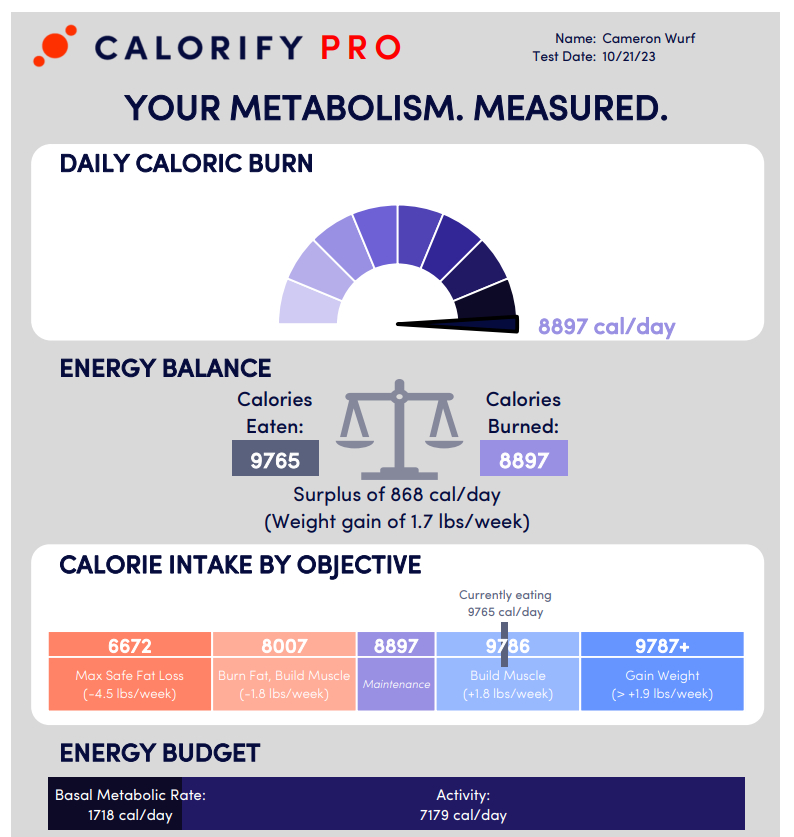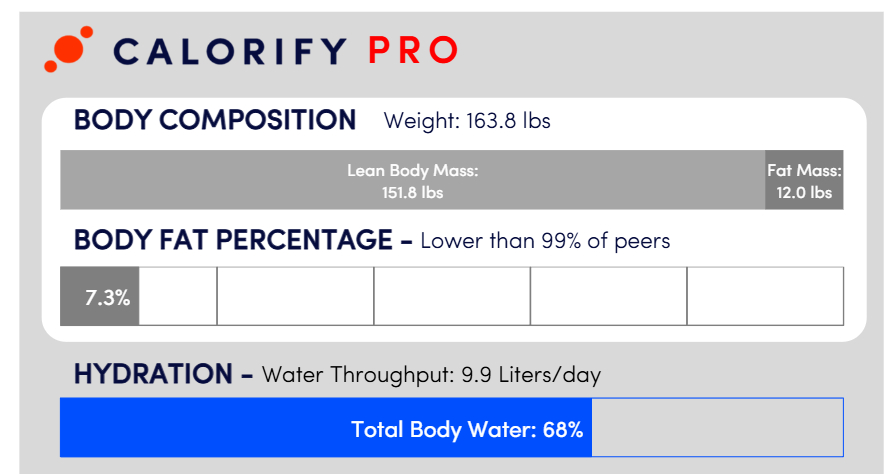Cameron Wurf clocked the fastest Ironman bike leg in history at Ironman Texas last weekend. The Australian rider covered the 112-mile bike leg split in 3:53:32, clocking an average speed of 28.7mph or 46.2km/h, which shaved 61 seconds off the previous record.
After the event, he unveiled his insane fuelling strategy in an interview with The Feed, which was subsequently posted on social media.
His candid description of his aggressive fuelling provided a great insight into how pro triathletes (and likely road pros too) are fuelling for the demands of events like Ironman.
But does Wurf have something of a unique metabolism that allows him to process far more fuel than other riders and regular amateurs?
We chatted with Wurf to find out more about how he plans his nutrition strategy, what informs it, breaking his nutrition partner’s expenditure record, and to find out just how he carried all of those gels in the first place.
In his first interview, Wurf explained he consumed a little over 200 grams of carbohydrates per hour on the bike leg, getting through about 28 gels. That’s a huge amount, particularly for mere mortals for whom the typically accepted ceiling sits at around 90 grams per hour, but likely even for other athletes too.
Triathletes often carry multiple gels decanted into a plastic flask, and Wurf explained he did a similar thing with a bottle after a Pinarello bike change provided some additional space on the downtube to carry another.
The latest race content, interviews, features, reviews and expert buying guides, direct to your inbox!
“I’ve switched to the Olympic bike, the bike they developed for Filippo Ganna and Josh Tarling for the [Paris] Olympics. With the old triathlon bike [Pinarello Bolide F TR], I used to have a storage bin on the down tube. It just didn’t dawn on me to replace it with an aero bottle, because it was part of the bike. But the reality is, it’s probably only a watt or two of aerodynamic loss; it’s probably negligible.
“So when I had the new bike, I could use a bottle on the downtube. So then I realised, wait a minute, I can fill that bottle with gels.
“I’m able to fill that bottle with gels, I think it held 24 gels, plus the other 10 I can carry. So that’s 34 gels. I probably had even more than 28 in the race, to be honest. So basically, I’m filling a 700ml drink bottle with gels and adding a little bit of water. It’s a lot of gels.”
Wurf also talked about the large amounts of sodium he used during his ride, he aimed to take on board 1500mg of sodium per hour in bottles, a very large amount in and of itself.
Wurf explained he completed a practice Ironman workout in similar conditions to Ironman Texas with ex-Ineos Grenadiers physiologist Aitor Virbay using a sweat patch to map out his sodium needs.
“Aitor was able to calculate how much I was sweating when my body was really struggling. I average around 155 BPM heart rate for an Ironman. So you’re pegged at that for seven and a half hours. So you’re sweating quite a lot at that kind of intensity.
“With sodium, you can have too little, and you’ll cramp, but if you have too much, you just sweat it out. So it’s better in an Ironman to go a little bit overboard than underboard.”

Wurf works with a company called Calorify, which works with athletes to measure energy expenditure. After testing, Wurf found he has quite a special engine that can easily cope with the calories and sugar volume he took on during the race.
But he stressed simply maximising carb intake may not be a magic solution for everyone and could even have health risks like diabetes. His strategy is the result of a lot of scientific analysis and years of training.
It also turns out that Wurf’s record-breaking Ironman performance set another record, resulting in the highest ‘total energy expenditure’ that Calorify had ever seen from any athlete they had ever tested, in any sport.
“The Calorify test was something I did with the team. It’s quite an extensive test and is seen as the gold standard in calorie intake usage testing. But it’s also very specific in helping you with what sugars you use best.
“I’m a really good fructose burner. So the gels I choose will have fructose in them. I spend two weeks or so before the race, preparing my stomach by having a lot more fruit. Not so much pieces of fruit, but a lot of smoothies. And I think it’s working, because in the race, I have no stomach issues at all.”
Wurf explained he’s still analysing his limits, and will be dissecting the data from his Texas performance; he actually still felt hungry during the running leg of the event.
“On the run, I got quite hungry. Even though I was still consuming over 100 grams of carbs per hour. Maybe my metabolism was moving too quickly from having so much sugar.
“Which is something that a nutrition partner did want to discuss. They said, ‘Well, this is fantastic, but there’s a chance you’re pushing it a bit too far, because you did get hungry on the run with that amount of calories.”
Wurf’s bike leg is only one part in the Ironman puzzle, though, which he admits he is still trying to figure out. He has another Ironman championship in six weeks and is clearly motivated to put it all together.
“It felt good. I hadn’t ridden like that for a long time, and it was nice to get my confidence back. I’m looking forward to the next opportunity.
“If I can just put everything together over the next six weeks in training, tidy up my swim, and get some more kilometres into my running legs. I feel like that good performance isn’t too far away.”














